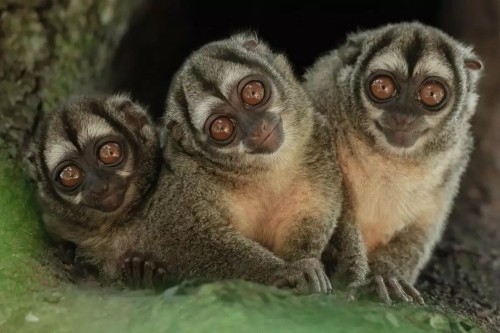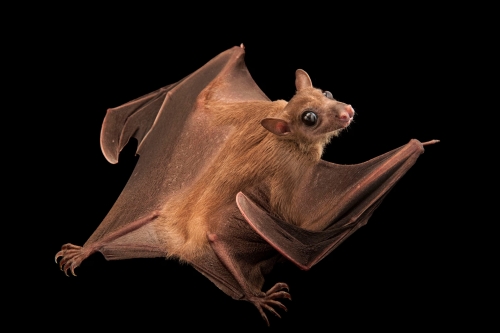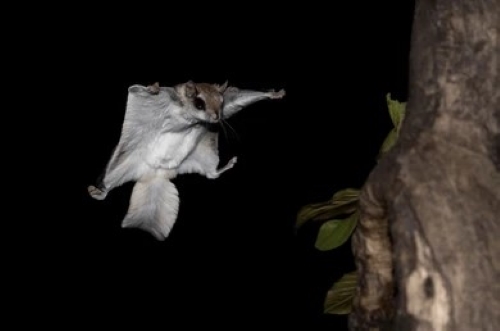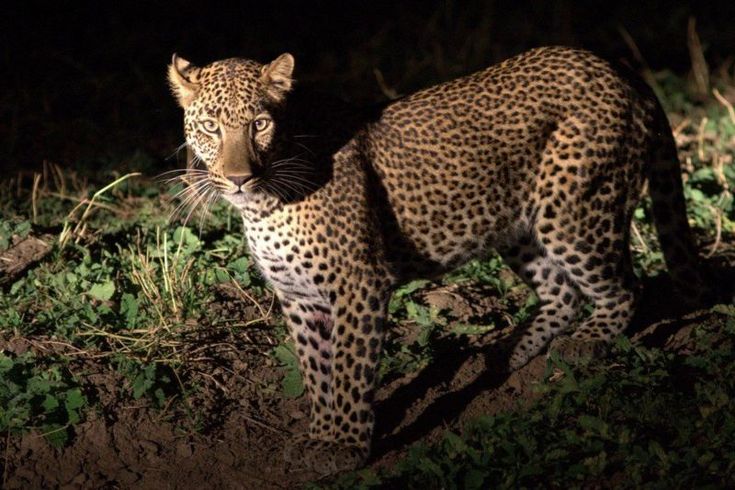Nocturnal Animal is a special types of animal species that primarily operate during the night, when the sun goes down, which makes an entirely set of different set of creatures come to life. Due to their behaviour and adaptation, they can thrive in low-light conditions and hunt at night, often in search of food. Their adaptation includes their vision, advanced hearing capabilities, and many specialised methods like echolocation, which enable them to navigate and hunt effectively in darkness.
Animals that are nocturnal are active at night and sleep during the day, and due their their specific behaviour, they are protected from predators and competition for food.
In this article, we will explore some top nocturnal animals which have the best Eyesight in the world.
List of Nocturnal Animals
Nocturnal animals |
| Night Monkeys |
| Bats |
| Owls |
| Aye-Ayes |
| Flying Squirrels |
| Leopards |
| Raccoons |
| Hedgehogs |
| Honey Badgers |
| Frogs |
Brief Overview of the Nocturnal Animals
1. Night Monkeys

Source: Wild Expedition
Night Monkey, which is also known as the owl monkey. This is the only species of monkey which is truly a Nocturnal monkey in the world. They are native to Central & South America. They have evolved of large eye and they are highly active at night.
2. Bats

These flying mammals are the champions of the night, and they use echolocation to hunt the insects at night, and they avoid obstacles. Bats are found nearly worldwide, and they play a very significant role in the ecosystem by pollinating plants and dispersing seeds.
3. Owls

Source: Shutterstock
Owls have the special ability to hunt during the night due to their adaptation for nighttime. These Nocturnal birds are well-adapted with binocular vision and have an incredible sense of hearing. Owls can hunt many small mammals, insects and even many small fish during the darkness of the night.
4. Aye-Ayes

Source: Shutterstock
Aye-Ayes are the primary Nocturnal animal, which are native to Madagascar and are known for their foraging method.
They use their long, thin middle finger to extract the insects from trees to listen for hollows where insect larvae are hiding, which they then extract with the same finger.
Aye-Ayes play a vital role as the world's largest nocturnal primate, with their continually growing incisors like a rodent, and their status as an endangered species due to habitat loss and local superstitions.
5. Flying Squirrels

Source: Shutterstock
Flying Squirrels are the gliding mammals that are most active at night, and they glide from tree to tree using a membrane called a patagium stretched between their front and back legs.
They usually feed on fruits, nuts, insects and eggs of small birds. Their large eyes help them to navigate in the forest at night, and their long tails help to stabilise their flying.
6. Leopards

Source: pinterest
Leopards are highly active Nocturnal animals during nighttime, and they hunt during night-time and take rest during the day. They are very solitary animals and they hunt using their fragile powers, powerful jaws and camouflage to ambush prey. They are excellent climbers, and they often drag their kills up into the tree to keep safe from other predators.
7. Raccoons

Source: Shutterstock
Raccoons are highly intelligent, Nocturnal animals, and they are dextrous omnivores. They are commonly found in North America, and they have a high sense of smell and touch.
They are most active at night to search for food, but they are also seen during the daytime.
Conclusion
In conclusion, nocturnal animals showcase incredible adaptations that allow them to thrive in darkness. With exceptional eyesight, acute hearing, and unique hunting skills, these creatures—like owls, bats, leopards, and aye-ayes—play vital ecological roles. Their night-time activities help maintain balance in nature and reveal the wonders of evolutionary survival.
Comments
All Comments (0)
Join the conversation